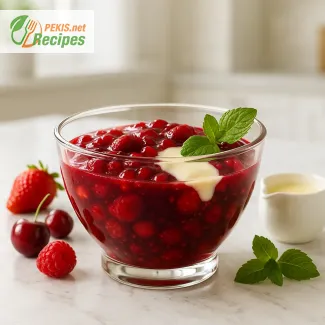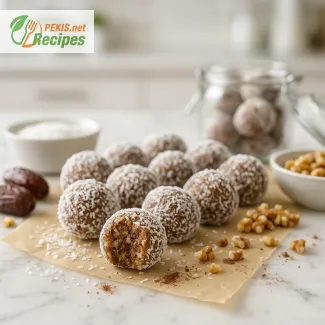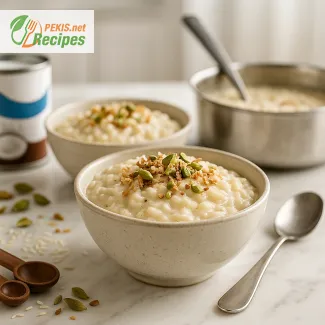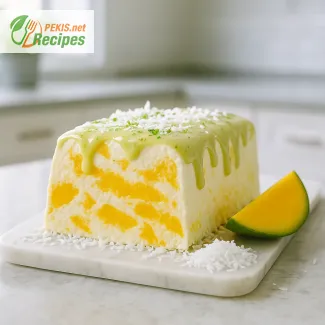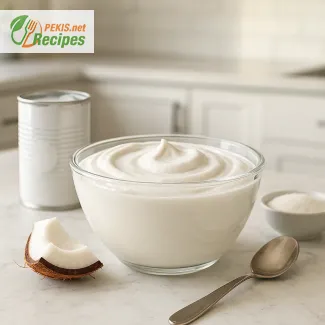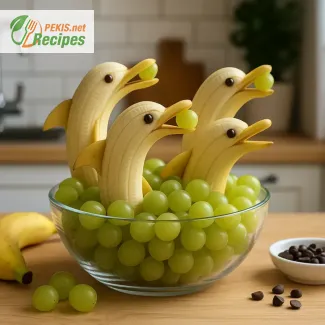
Creative fruit animals your kids will love to make and eat
Why banana dolphins are the perfect fun and healthy snack idea for children
Few things capture a child's imagination like animals, especially when they show up at snack time. The banana dolphin is a delightful fusion of creativity, nutrition, and playful presentation, making it one of the most engaging fruit crafts for children and parents alike. With just a banana, a grape, and a bit of imagination, you can turn ordinary fruit into a charming dolphin leaping from a sea of grapes. This idea has taken center stage at kids’ birthday parties, preschool snack tables, and even health-conscious family gatherings.
The charm of banana dolphins goes beyond visual appeal. They provide a simple way to encourage healthy eating habits in children by transforming fruit into something they want to play with and eat. Kids who might hesitate at the sight of a peeled banana or a bowl of grapes are far more likely to dig in when their snack looks like a jumping dolphin holding a grape in its mouth. It's a snack and an activity rolled into one.
A visual treat that invites children to eat more fruit
Fruit animals like the banana dolphin are part of a growing trend that blends food art with healthy snacking. They're especially popular among parents looking for screen-free ways to entertain their children, and among teachers or daycare providers who want to bring more creativity into snack breaks. The best part? No special tools or skills are required—just a knife, a bowl, and some imagination.
Unlike more elaborate food decorations, banana dolphins are quick and easy to make, often in under five minutes. This makes them a fantastic last-minute idea when you need a kid-friendly treat that looks like you planned for hours. Whether you're making just one for your child's lunchbox or preparing a whole school of banana dolphins for a party table, the process is intuitive and rewarding.
The rising popularity of banana dolphins in kids’ food art
In recent years, social media platforms and parenting blogs have brought attention to fun fruit crafts like this one. Banana dolphins have become a go-to idea for parents who want their kids to eat more fruit without turning to sugary or processed snacks. The friendly dolphin shape is universally loved, and the use of grapes as the "water" adds texture and natural sweetness to the final dish.
This snack is not only beautiful to look at—it’s also perfectly portioned for small hands. A single banana dolphin can serve as a light snack or be paired with other fruits for a complete fruit platter. The presentation makes it more exciting than a regular fruit salad, especially for children who enjoy tactile and visual experiences while eating.
Ideal for birthdays, school lunches, and fun home projects
Whether you're preparing a themed birthday table or just want to surprise your child with something fun in their lunchbox, banana dolphins check every box: they’re healthy, visually fun, inexpensive, and incredibly easy to prepare. You don’t need fancy ingredients—just fresh bananas and seedless green grapes. With minimal effort, you can create a snack that looks like a tropical scene brought to life.
Adding a few chocolate chips for the eyes or arranging the fruit in clear bowls enhances the aquatic effect, but even without extras, the result is charming. It’s also a great way to get kids involved in the kitchen. Many children enjoy helping to "build" their dolphin and choose the grapes that go around it, turning snack time into a hands-on activity.
How banana dolphins support healthy eating habits
Encouraging children to eat fruit can sometimes be a struggle, especially when competing with packaged snacks or sweets. Banana dolphins provide an interactive alternative that sparks curiosity and makes fruit fun. They’re an easy way to add variety to a child’s daily intake and can even be used to introduce fruit in educational settings—tying together nutrition, nature, and art.
What makes this snack so effective is its balance between fun and nutrition. Unlike snacks that rely on added sugars or artificial colors, banana dolphins offer pure, whole-food ingredients in a format that excites young minds. They're colorful, recognizable, and easy to handle, which encourages even picky eaters to take a bite.
Perfect balance of simplicity and delight in children’s snacks
The recipe behind the banana dolphin is so easy that it invites customization. Some parents choose to create themed fruit platters with other fruit animals, while others use it as a single visual accent in a lunch tray. Either way, the joyful appearance of the banana dolphin makes it a memorable addition to any snack or event.
There’s something inherently satisfying about crafting something beautiful out of just two ingredients. For kids, that satisfaction often turns into enthusiasm, which in turn encourages better snack choices. It’s a simple win-win: parents get peace of mind knowing their children are eating nutritious food, and kids get a snack that feels like a game.
A playful twist on fruit that becomes a conversation starter
The banana dolphin isn’t just a snack; it’s often the centerpiece of a child’s plate, something they’ll talk about, share with friends, and maybe even try to recreate themselves. Its playful nature and ease of assembly make it ideal for interactive snack stations, birthday themes like "Under the Sea", or just a rainy afternoon project at home.
Even adults can’t help but smile when they see a group of banana dolphins "swimming" in a bowl of green grapes. It’s a universal visual cue for fun, and yet it remains one of the simplest fruit crafts to prepare. That’s the beauty of this snack—it’s as engaging to look at as it is to eat.
Why this idea works so well for kids and parents alike
In a world where quick meals are often equated with unhealthy choices, the banana dolphin breaks the mold. It shows that healthy food can be fast, fun, and fantastic. It takes less than five minutes to make, requires no cooking, and offers all the appeal of a carefully crafted snack without any of the hassle.
Parents looking for wholesome snack options that children actually want to eat will appreciate the blend of nutrition and creativity. From daycare snack time to festive weekend brunches, banana dolphins offer a way to celebrate food, health, and playfulness—all in one cheerful bite.
- Wash the grapes thoroughly under cool water and pat them dry. Set them aside in a large bowl.
- Peel the bananas about halfway, keeping the bottom half of the peel intact to hold the "dolphin" in shape. Do not remove the peel entirely.
- Cut the banana tips (the stem end) gently to create an opening resembling a dolphin's mouth. Be careful not to split the banana too far.
- Insert a single grape in the opening of each banana to resemble the dolphin "holding" a ball.
- Use chocolate chips to make the eyes. Press one on each side of the banana near the cut to resemble dolphin eyes. They should stick naturally, but you can use a dab of peanut butter or icing for extra hold if needed.
- Place the banana dolphins upright in a bowl filled with green grapes. Angle them slightly to give the appearance of dolphins jumping out of water.
- Optionally brush the banana surface with a little lemon juice to prevent browning if serving after some time.
Ways to Elevate the Banana Dolphin Snack Experience
Creative enhancements, healthier twists, and common mistakes to avoid
The classic banana dolphin fruit snack is already a favorite among parents and children, thanks to its charming design and simple preparation. However, there are many ways to enhance this fun fruit craft—whether by adjusting its flavor, making it more nutritious, or adding unexpected textures that excite the senses. Turning a basic idea into something truly special often lies in the details, and even small changes can bring surprising improvements.
Add depth of flavor with complementary fruits
While green seedless grapes are the go-to "ocean" for the banana dolphins, introducing other fruits can take the flavor profile to a new level. For example, adding blueberries or kiwi slices into the grape bed introduces tanginess and color variation, enhancing both taste and visual appeal. These fruits pair well with bananas and keep the theme fresh and vibrant.
A tropical twist can also be achieved by mixing in pineapple cubes or mango chunks, offering a juicier bite and a richer aroma. Not only does this make the snack more interesting for older children, but it also adds variety to the usual fruit options at parties or lunchboxes.
Include creamy or crunchy textures for contrast
To create a more layered sensory experience, consider pairing the banana dolphin with a yogurt-based dip on the side. A small bowl of vanilla Greek yogurt, lightly sweetened and placed in the center of the fruit bowl, invites dipping and turns the snack into a more satisfying treat. You can sprinkle crushed granola or chopped nuts over the yogurt to introduce crunch—just be mindful of nut allergies if serving to children.
Alternatively, a dusting of toasted coconut flakes or chia seeds can provide texture without overpowering the natural sweetness of the fruit. These additions are especially appealing for adults enjoying the snack alongside their kids.
Use natural enhancements to boost presentation
If you’re looking to upgrade the visual effect, use a glass trifle bowl or individual transparent cups to layer the grapes and anchor the banana dolphin vertically. This setup not only provides structure but enhances the illusion of dolphins leaping from water. The transparency also lets the colors of the fruit shine through, adding depth to the display.
To make the eyes more expressive, replace plain chocolate chips with candy-coated chocolate pearls or mini raisins. Some parents even use small edible sugar eyes for a cartoonish appearance—perfect for themed parties or celebrations.
Why homemade banana dolphins are better than store-bought alternatives
The appeal of crafting banana dolphins at home lies in total control over the ingredients. Commercial fruit snacks often contain added sugars, preservatives, and artificial flavors. By preparing this snack at home, you guarantee fresh, whole ingredients without additives.
Moreover, involving children in the process encourages them to develop kitchen confidence. It gives them a sense of ownership, making them more likely to enjoy and finish the food they helped create. The home setting also allows for adaptation to dietary restrictions, preferences, or creativity, making each version unique and personal.
Common mistakes and how to avoid them
One of the most frequent issues when making banana dolphins is over-ripened bananas, which tend to be too soft to hold their shape. Always choose bananas that are yellow with minimal spotting—they should be ripe but still firm. If the banana is too ripe, the mouth cut may collapse or the fruit may slide when placed upright.
Another mistake is cutting the dolphin’s mouth too wide. A narrow slit, just enough to hold a single grape, is all you need. Cutting too far can cause the banana to split, ruining the dolphin illusion. If you're making multiple servings, assemble them just before serving or brush the exposed parts of the banana with lemon juice to prevent browning.
Also, ensure the grapes are seedless and properly dried. Wet grapes can cause the bananas to slip in the bowl, and seeded grapes present a choking hazard for young children.
Healthier substitutions without compromising the fun
While the traditional version is already wholesome, there are ways to make the banana dolphin even more beneficial. For children who need to limit sugar intake, choose bananas that are less ripe to reduce natural sugar content. Pairing the banana with high-fiber fruits like blackberries or raspberries helps moderate the overall glycemic load.
For the eyes, instead of chocolate, use dried currants or unsweetened coconut dots molded into shape with a bit of nut-free spread. These alternatives reduce processed ingredients while maintaining the visual charm.
Even the presentation can influence how healthy the snack appears. Placing each dolphin in a small compostable cup or biodegradable tray can give an eco-friendly message while keeping portions in check.
Make it educational and seasonal
Use the banana dolphin not just as a snack but as a learning tool. Talk about marine life, fruit nutrition, or sustainability while preparing it. You can also adapt the theme to the season: during summer, add watermelon cubes and berries; in autumn, incorporate apple slices and pomegranate seeds for a rich harvest look.
These tweaks keep the concept fresh and allow families to enjoy banana dolphins year-round without feeling repetitive. It also teaches children about seasonal produce and how to adapt recipes based on what's available and affordable.
Transform a snack into an interactive experience
One of the most overlooked enhancements is making banana dolphin preparation interactive. Lay out the ingredients and let each child build their own dolphin, choosing the grape, positioning the eyes, or even naming their fruit dolphin. This personal engagement increases enthusiasm and can make snack time a favorite daily ritual.
You can even set up a mini fruit crafting station at a party or picnic, where kids build their own dolphin and decorate their grape sea with berries, melon balls, or other colorful fruits. The result is not only a healthy snack but a memorable experience.
Allergens present in the recipe:
- Chocolate chips may contain traces of milk or soy.
- Optional use of peanut butter for adhering eyes (common allergen).
Gluten:
- This recipe is naturally gluten-free.
- To ensure it remains gluten-free, use certified gluten-free chocolate chips and avoid cross-contamination with utensils or surfaces.
Allergen replacement tips:
- For chocolate allergy: Use small dried blueberries or edible googly eyes made from allergen-free ingredients.
- For nut allergies: Avoid using nut butters to stick the chocolate chips; use honey or maple syrup instead.
Vitamins and minerals per serving (approximate):
- Vitamin C – 11 mg: Supports immune function and skin health
- Vitamin B6 – 0.4 mg: Aids brain development and metabolism
- Potassium – 385 mg: Regulates blood pressure and muscle function
- Magnesium – 32 mg: Supports bone health and nerve function
- Folate – 22 mcg: Essential for cell formation and growth
Antioxidants per serving (approximate):
- Dopamine (from banana) – trace: Contributes to mood regulation and reduces oxidative stress
- Catechins (from grapes) – 50 mg: Help protect cells from damage and support heart health
- Vitamin C (from grapes and banana) – 11 mg: Strengthens the immune system and acts as a powerful antioxidant
